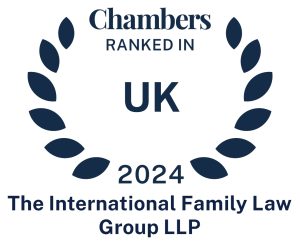Although the concept of habitual residence plays a crucial role worldwide in determining a family court’s jurisdiction regarding children, it is not defined in statutes, international conventions, or treaties in which it features.
As a consequence, the meaning of the concept and the manner in which a child becomes habitually resident in particular country has been the subject of extensive judicial consideration, here and abroad.
On 25 August 2020 the Court of Appeal handed down judgment in Re M (Children) (Habitual Residence: 1980 Hague Child Abduction Convention) [2020] EWCA Civ 1105, and confirmed that the guidance given in leading authorities such as the Supreme Court case of A v A and another (Children) (Children: Habitual Residence) (Reunite International Child Abduction Centre intervening) [2013] UKSC 60, [2014] A.C. 1, is the approach the court should take, without any gloss, in the determination of Habitual Residence. The decision in ‘Re M’ is informative and essential reading for all involved in international children work. We acted for the mother.
Background
The two subject children aged 6 and 8, and their parents were all born in Germany. One child has significant additional care requirements. The parents married in 2014 and separated in 2017. The father continues to live in Germany. As found by the court, the mother was the primary carer.
In July 2018, the mother wanted to move with the children to England and sought the father’s agreement to a move for 12 months. She intended to live, together with the children, at the home of her boyfriend. She obtained a contract to work in the same town as her then boyfriend (and to whom she is now married).
The parents of the two subject children signed a letter of intent. It was agreed that those children would come to live in England with the mother and her partner. It was also agreed that they would stay in England until a date in 2019 and that, in December 2018, the parents would re-evaluate matter. The children began attending school in England in September and, as found by the court, settled quickly.
In December 2018, the parents reviewed the situation, through mediation. The main thrust of what was then agreed was that the children would return to Germany with the mother at ‘some point in the summer’ of 2019.
In July 2019 the mother found he was pregnant. This led her to ‘consider the arrangements that the parents had made’ and to decide that she would not return to Germany. She sent an email to the father saying that “she intended to remain with the [children] in England”.
The father sought the children’s return to Germany under the 1980 Hague Convention. The mother opposed a return on two bases. First, she challenged the father’s case that the children were habitually resident in Germany at the relevant time, which engaged the question of whether the 1980 Hague Convention was engaged. In the alternative the mother contended that the exception provided for by Art 13 (b) of the 1980 Hague Convention was satisfied.
HHJ Wallwork (sitting as a judge of the Family Division of the High Court), at first instance, concluded that the mother had retained the children in England, in breach of the agreement between the parents, at the end of July 2019 (rather than in September 2018 as the father had contended). He further decided that, as at the date of that retention, the children had not ‘lost’ their habitual residence in Germany, so remained habitually resident in Germany. He also concluded that a return of the children to Germany would not place them in an intolerable situation within the meaning of Article 13(b) of the 1980 Hague Convention. The judge therefore ordered a return of the children to Germany, albeit with the order not taking effect until after the birth of the mother’s third child.
The mother appealed to the Court of Appeal. She argued:
(a) that the judge failed properly to analyse the issue of habitual residence and that if he had conducted that exercise appropriately he would have concluded that the children had become habitually resident in England by the end of July 2019
(b) that the judge was wrong to find that returning the children to Germany would not place them in an intolerable situation; and
(c) that, if neither (a) nor (b) succeeded, then, exceptionally, the implementation of the return order should be postponed to enable the mother to make an application in Germany permitting the relocation of the children to England
Crucially, it was argued on behalf of the mother that the judge appeared to have misunderstood and misapplied Lord Wilson’s well known ‘see-saw analogy’ (below), by thinking that the first question he had to determine was whether the children had lost their habitual residence in Germany. The mother’s contention was that, given the children were German nationals and that their father with whom they continued to spend significant time, lived in Germany, they would, one hoped, never lose their connection with Germany but that this could not properly have prevented them from acquiring habitual residence in England on the basis of the principles set out in A v A.
What is Lord Wilson’s ‘see-saw analogy’?
In Re B (A Child) (Habitual Residence: Inherent Jurisdiction) [2016] UKSC 4, [2016] A.C. 606, the UK Supreme Court decided that it had Jurisdiction to make orders concerning a child that had been taken by her biological mother to live in Pakistan, because the child retained its Habitual Residence in the United Kingdom. The main issue had been the point at which Habitual Residence is lost. The Supreme Court confirmed that the time that it takes to achieve the requisite degree of integration to acquire a new Habitual Residence is fact-specific, and in that context Lord Wilson used the image of a see-saw to explain why it was unlikely to be the case that a child would ever be in state of limbo, in the sense of having lost Habitual Residence in one country without at the same time having acquired Habitual Residence in another country. Lord Wilson said (at para [45]): “I conclude that the modern concept of a child\’s Habitual Residence operates in such a way as to make it highly unlikely, albeit conceivable, that a child will be in the limbo in which the courts below have placed B. The concept operates in the expectation that, when a child gains a new Habitual Residence, he loses his old one. Simple analogies are best: consider a see-saw.” [emphasis added]
In Re M it was argued on behalf of the mother that the judge’s apparent misunderstanding of Lord Wilson’s see-saw analogy had led him to focus on examining whether the children had lost their strong connections with Germany, rather than on whether their residence in England had satisfied the requisite degree of integration and stability for them to have become habitually resident in England, and thus lost their habitual residence in Germany.
Judgment
Moylan LJ (who gave the lead judgment) concluded that Lord Wilson’s see-saw analogy:
“needs to be used with caution because if it is applied as though it is the test for habitual residence it can, as in my view is demonstrated by the present case, result in the court’s focus being disproportionately on the extent of a child’s continuing roots or connections with and/or on an historical analysis of their previous roots or connections rather than focusing, as is required, on the child’s current situation (at the relevant date). This is not to say continuing or historical connections are not relevant but they are part of, not the primary focus of, the court’s analysis when deciding the critical question which is where is the child habitually resident and not when was a previous habitual residence lost” [62].
The Court of Appeal concluded that the judge had wrongly focused on the question of whether, in the light of the continuation of the strong connections of the children with Germany they had lost their habitual residence in that country, rather than on the question of whether the residence of the children in England satisfied the criteria identified in A v A. That, said the Court of Appeal, was the wrong focus and if the judge had considered whether the children had achieved a sufficient degree of integration into a social and family environment in England he would, inevitably on the evidence before him, have concluded that they had done so.
The mother’s appeal was allowed, and the father’s substantive application for a return of the children to Germany was dismissed.
Conclusion
The Court of Appeal’s decision in Re M (Children) (Habitual Residence: 1980 Hague Child Abduction Convention) [2020] EWCA Civ 1105, reminds practitioners, in the UK and in countries with a similar approach, that whilst Lord Wilson’s see-saw analogy provides a powerful visual image it was not intended to, nor could it, change or replace the guidance given in other leading authorities as to the approach the court should take in relation to the determination of Habitual Residence, and that continuing or historical connections with a particular country are part of, but not the primary focus of, the court’s analysis.
The International Family Law Group LLP (Helen Blackburn) acted for the Appellant mother, together with Katy Chokowry, led by James Turner QC
Helen Blackburn
[email protected]
The International Family Law Group LLP
www.iflg.uk.com
© September 2020
-
Helen Blackburnhttps://iflg.uk.com/blog/author/helen-blackburn
-
Helen Blackburnhttps://iflg.uk.com/blog/author/helen-blackburn
-
Helen Blackburnhttps://iflg.uk.com/blog/author/helen-blackburn
-
Helen Blackburnhttps://iflg.uk.com/blog/author/helen-blackburn









